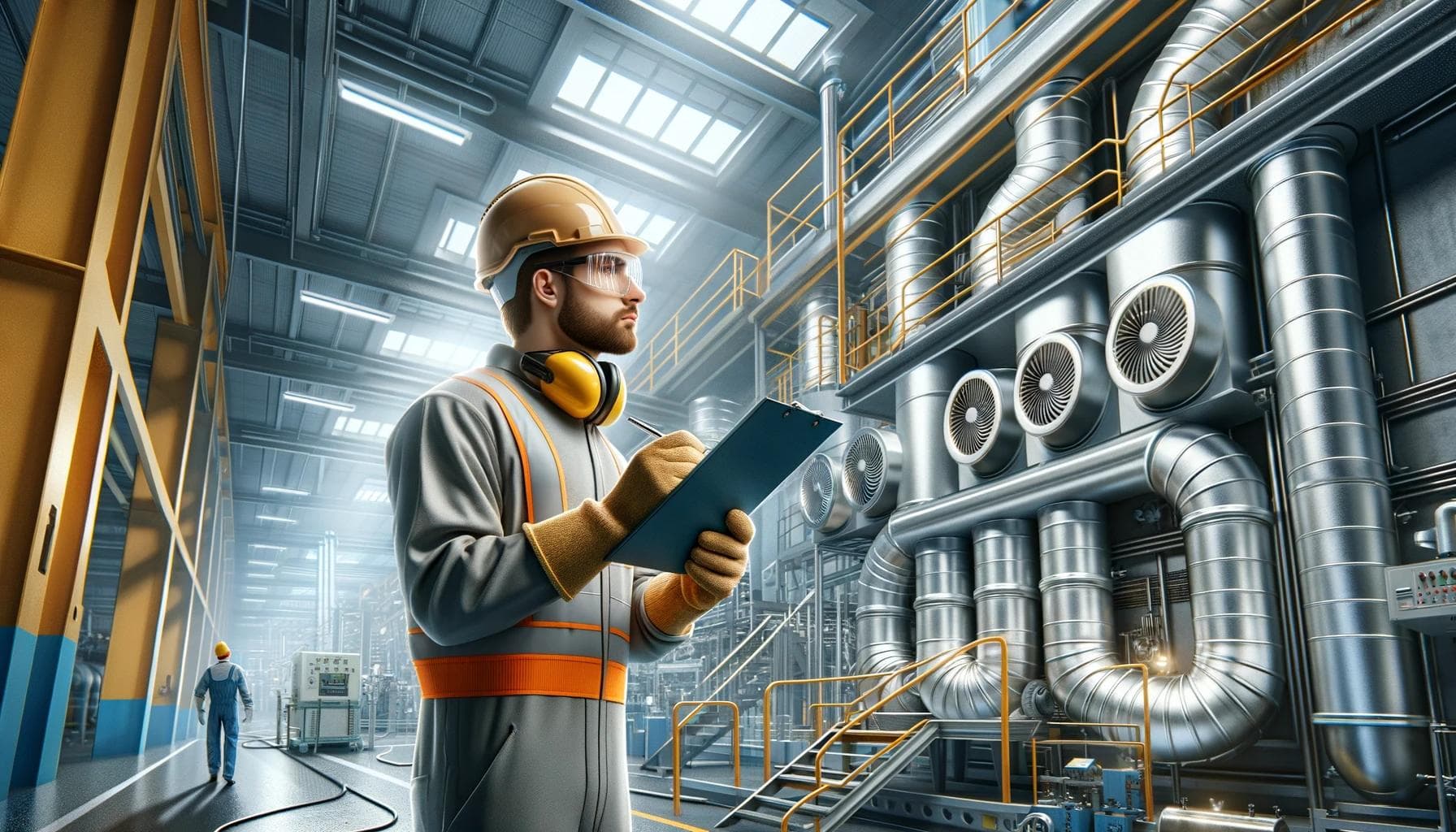
Ensuring Safety with Comprehensive LEV Risk Assessments
In the ecosystem of industrial environments, where potent and sometimes hazardous substances need to be managed, Local Exhaust Ventilation (LEV) systems stand as critical bastions of worker safety and environmental health. LEV risk assessments form the cornerstone of a robust approach to managing the multifarious risks associated with process-driven air pollutants. The imperative of conducting thorough LEV risk assessments cannot be overstated for businesses intent on complying with health and safety regulations and safeguarding their workforce.
What Are LEV Risk Assessments?
At its core, an LEV risk assessment is a systematic process designed to identify, evaluate, and control the risks of airborne contaminants released during industrial operations. The overarching goal is to ensure that LEV systems are effectively capturing and containing harmful dust, fumes, vapours, or gases at the source, thus preventing them from polluting the workplace air and safeguarding workers' health.
The Importance of Regular LEV Risk Assessments
Regular and meticulous LEV risk assessments are not only a legal requirement under UK Health and Safety Executive (HSE) regulations but also a prudent practice for any forward-thinking entity. Health risks from inhalation of contaminants can be severe, leading to chronic respiratory conditions, occupational asthma, or even cancer. Industry not only has a legal but a moral duty to implement all necessary precautions to mitigate these risks.
The Legal Framework
The legal backbone of LEV risk assessments is enshrined in the Control of Substances Hazardous to Health (COSHH) Regulations 2002. The COSHH requirements compel employers to either prevent or reduce their workers' exposure to hazardous substances to the lowest reasonable level. This involves a strict mandate to assess risks from hazardous substances and implement appropriate control measures where necessary.
Stages of an Effective LEV Risk Assessment
An effective LEV risk assessment is a multi-stage process that requires attention to detail, expertise, and deep knowledge of industry best practices. It typically includes the following stages:
Identifying Hazards
The first step in the risk assessment involves identifying the types and quantities of hazardous substances in the workplace, as well as understanding the processes that generate these contaminants.
Assessing Risks
After identifying the hazards, it is critical to evaluate the extent of risk associated with them. This includes considering the potential health effects on workers and the effectiveness of existing control measures.
Implementing Controls
If the assessment indicates that employees are at risk, additional control measures should be introduced. These can range from improving existing LEV systems, introducing new ones, or changing work practices to reduce exposure.
Recording Findings
It is legally binding to document the findings of LEV risk assessments. This record should detail the hazards identified, risks assessed, and controls put in place, and it must be accessible to those who need to know.
Regular Review and Monitoring
LEV systems and risk assessments are not 'set and forget' entities. They must be reviewed regularly, especially if there are changes to processes, substances used, or the work environment itself. Regular health surveillance of workers may also be necessary to monitor exposure levels and any health impacts.
The Role of LEV Risk Assessments in Industrial Safety
In industrial contexts—be it manufacturing, chemical processing, or engineering—LEV risk assessments are an inseparable part of the operational fabric. They serve as crucial blueprints that guide day-to-day and strategic decisions pertaining to workplace safety.
With industry-specific variables in play, such as the scale of operations and the nature of the processed materials, the complexity of LEV risk assessments can vary significantly. However, firms like WBT Services Ltd possess the expertise to translate this complexity into actionable insights, ensuring that assessments are not merely procedural but pivotal in creating safer work environments.
Concluding Remarks
In sum, LEV risk assessments are the navigational instruments by which industrial enterprises sail the waters of workers’ health and safety. They are not simply compliance checkboxes but essential processes that reflect a company’s commitment to employee well-being and environmental stewardship. Businesses across the UK, by recognizing the importance of these assessments and adhering to the highest standards, become not only better employers but also more sustainable and responsible entities in the broader economic ecosphere.
For more information and professional services related to LEV risk assessments, WBT Services Ltd is a dedicated and experienced provider in the field. Their expertise ensures that industry operators can confidently meet regulatory requirements and safeguard their valued human resources. Visit WBT Services Ltd for all your LEV assessment and industrial safety needs.
The responsibility for maintaining a safe industrial workplace is significant, but with rigorous LEV risk assessments, this challenge becomes a manageable, ongoing process that underpins the integrity of the entire enterprise. Safeguarding health is an investment that never depreciates, providing returns in the form of a resilient, healthy, and productive workforce, as well as a reputation for excellence and conscientiousness in industry safety standards.

